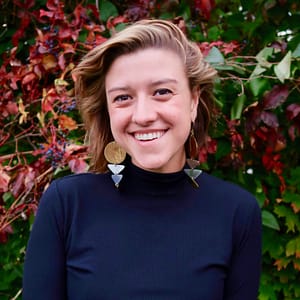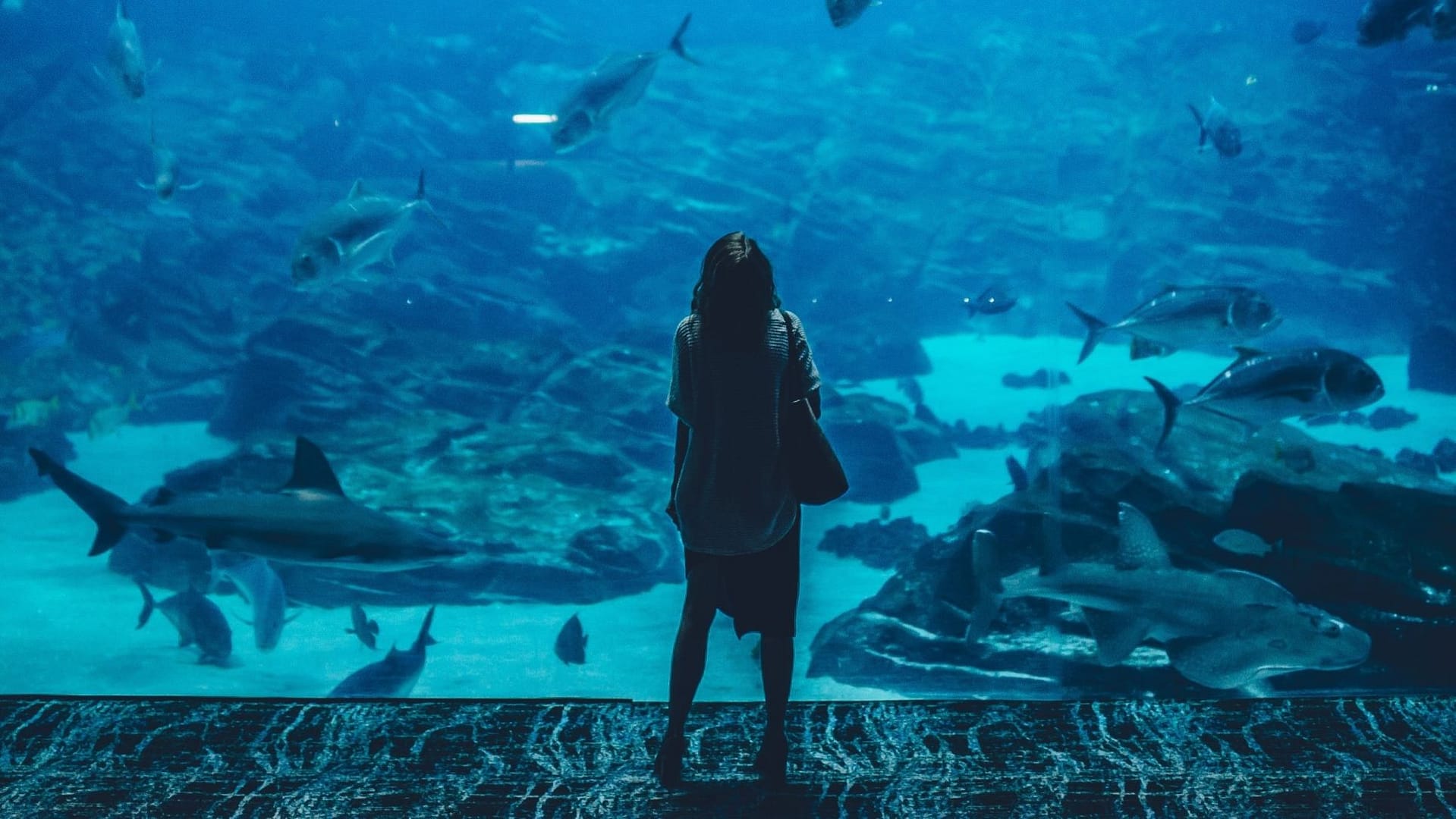Close your eyes and just take a second to listen to the world around you. How many sounds can you hear? Can you pick a single sound out of the noise and locate where it’s coming from? What does the sound tell you about the shape of the room and what’s in it?
That last question may seem strange to some people, but for those who are blind or vision impaired, the idea of “seeing” with sound isn’t far off. In fact, there is a growing community of people around the world who are using a technique called FlashSonar to train their brains to see the world around them in stunning detail using sound.

The remarkable plasticity of the human brain!
Have you ever heard that old adage that when you lose one sense, the others become heightened? Well that’s not too far off from the truth, and now we have a more complex understanding of what that actually can mean! 1You see, for years we thought that the human brain was almost impossible to rewire, the adult brain, at some point, becoming fixed. We are now realizing just how wrong this idea is. More and more research is proving that the brain is far more capable of rewiring itself than previously thought. Through a process we call neuroplasticity, the nervous system is able to reorganize its structures, functions, or connections throughout our lives. 2 This can happen after an injury like a stroke or traumatic brain injury, or with repeated practice like working towards healthy lifestyle-choices or picking up a new instrument or hobby. 3
So, what does all this neuroscience have to do with making sense of the world with sound? Well, it means that there is great untapped potential in teaching people with blindness and vision impairments a new way of navigating the world that is more empowering, self-sufficient, and developed and taught by members of the blind community.
FlashSonar, Visioneers, and the Power of Seeing with Sound!
If you’ve been around the Goodness Exchange for a while, you may be familiar with the concept of FlashSonar and seeing with sound through a thought leader we are close with here: Daniel Kish. Daniel has been blind since shortly after birth, and as a young child he began using sound–mainly clicking noises made with his tongue–to navigate the world. The sound of these clicks would bounce off the objects around him and create a snapshot of his environment, complete with trees, cars, furniture, and whatever else was there.
I’ve seen this incredible process at work for myself: One time, while on a Zoom call with Daniel, he realized his AirPod was missing from its case. I watched on as he entered the pitch black room behind him and emerged with the AirPod a few minutes later, telling me that he had found it under the bed. Stunned, I thought about the incredible detail Daniel was capable of perceiving. Using sound in this way could not only help those with visual impairments find a door frame or prevent them from running into furniture, but it could be learned and executed so well as to find an item the size of a quarter under a bed. He was seeing without eyes. Seeing with sound.
Daniel has come to call this kind of echolocation FlashSonar, and for over 20 years he has taught people around the world his way of navigating through his organization, Visioneers. Daniel and his team have taught kids and adults to climb trees, hike, bike, and navigate the world without the aid of another person–or service animal’s–eyes. Using FlashSonar and the wonders of neuroplasticity, the brain learns to hear and interpret echos of sound and turn them into mental maps so accurate that people can learn to calculate things like distance, shape and even texture.
Seeing sound for yourself!
Perhaps the idea of learning to see with sound seems far outside your capability. Or maybe you’re wondering if you could unlock this astonishing power of your brain for yourself. We’ve got a great video for you to check out featuring Senior Visioneer Brian Bushway–who lost his sight at 14–teaching the basics of FlashSonar to blind and sighted YouTubers Molly Burke and Joe Hanson. Take a watch, and maybe try out some of the techniques Brian teaches them for yourself!
Thank you to Be Smart for this incredible video. If you want to get lost in one of the best science channels on YouTube, go scroll through Be Smart’s full library of content. They are one of our favorite YouTube creators for a reason. A second thanks to Molly Burke as well. Her YouTube Channel is quickly becoming a personal favorite of mine! So make sure you go and check her channel out, too!
Lastly, a big thanks to Brian Bushway and Visioneers for leading us all through an incredible exercise in possibility, humanity, and the limitless capability of the brain. Every time that I get to spend time with the work that Visioneers does, I am astonished by their impact. I strongly encourage you to go check out Visioneers and learn more about the work they do teaching FlashSonar and empowering people with blindness around the world.
You can head to their website to learn more, or check out our interview with Visioneer founder Daniel Kish on the Conspiracy of Goodness podcast! I also recommend you go read our article about Daniel’s story as it features a few more videos that will help you get an even better understanding of how FlashSonar works.
See without Eyes and Repurpose the Brain with Daniel Kish (Episode #03)
What if I told you that you don’t need eyes to see? Today’s thought leader is the ‘real-life-Batman’ Daniel Kish. Daniel is an expert in human echolocation and President of World Access for the Blind and one of the world’s foremost inspirational speakers. Blind since he was 13 months old, Daniel has learned to “see” using a form of echolocation.
Read Article Watch Video Listen to PodcastDiscover the Man Who Sees Only with Sound! He’s Redefining What’s “Impossible”!
Daniel Kish has no eyes yet he can see the world around him using sound, much like a dolphin or bat, and he’s teaching us all to redefine what seems impossible.
Read Article Watch Video Listen to PodcastIf you’re interested in reading more about how people, both sighted and blind, learn to see using echolocation and the positive impact learning active echolocation can have on those who use it, check out this study!
What seeing with sound shows us about the world (and ourselves)!
“You–sighted people–have not developed your brain to actually understand the world and beauty of acoustic images”
-Brian Bushway
Watching this video for the umteenth time while writing this article, I am struck by the ways in which Joe–the sighted interviewer–is so profoundly changed by his experience seeing with sound. How his notion of what blindness means gets turned around as he experiences a new way of looking at the world. I am reminded each time I watch this video, particularly the last few minutes, of the ways in which we get stuck in our own view of reality.
We presume our way of looking at things is fixed, when, in reality, there are so many different ways to see and experience the world.
Whether we’re, quite literally, learning to see the world in new ways in this example, we find a passion or calling later in life that gives us a new perspective on the world, or we find ourselves in the presence of strangers who lets us see their way of life, we have to remember that there is no fixed version of how the world is. We can choose to learn from others, we can choose to get curious about new perspectives, even the habits we have right now fixed, and we can choose to change them. If our ability to learn is so limitless, then so too are the possibilities for a better future we can come up with.
I hope that you walk through the rest of your day experiencing possibility everywhere, challenging your assumptions about others, and remain curious about every person you meet.
Stay beautiful & keep laughing!
-Liesl

Don’t miss out on a single article!
Enjoy unlimited access to over 500 articles & podcast that give you a positive perspective on the state of the world and show you practical ways you can help.
Notes:
- Norman, Liam J., et al. “Human Click-Based Echolocation: Effects of Blindness and Age, and Real-Life Implications in a 10-Week Training Program.” PLOS ONE, vol. 16, no. 6, 2 June 2021, p. e0252330, journals.plos.org/plosone/article?id=10.1371/journal.pone.0252330, 10.1371/journal.pone.0252330. Accessed 1 July 2022. ↩
- Puderbaugh, Matt, and Prabhu D Emmady. “Neuroplasticity.” Nih.gov, StatPearls Publishing, 8 May 2022, www.ncbi.nlm.nih.gov/books/NBK557811/. Accessed 1 July 2022. ↩
- Shaffer, Joyce. “Neuroplasticity and Clinical Practice: Building Brain Power for Health.” Frontiers in Psychology, vol. 7, 26 July 2016, www.ncbi.nlm.nih.gov/pmc/articles/PMC4960264/, 10.3389/fpsyg.2016.01118. Accessed 1 July 2022. ↩
- Smart, Be. “How Blind People See with Sound… Feat. Molly Burke!” YouTube, 10 Aug. 2019, www.youtube.com/watch?v=08smCjKWNL0. Accessed 1 July 2022. ↩








